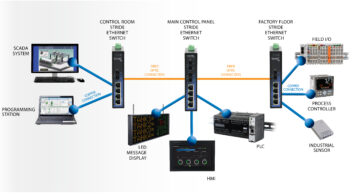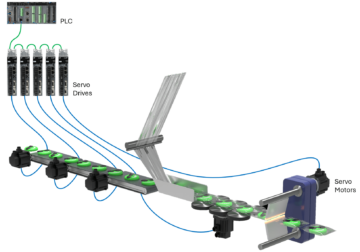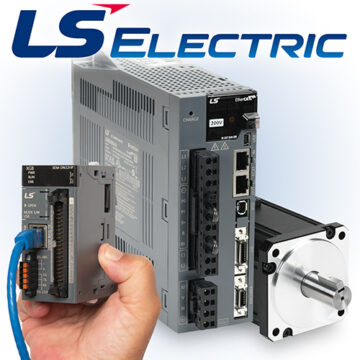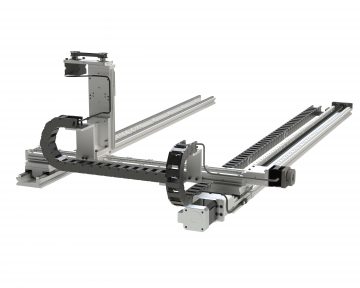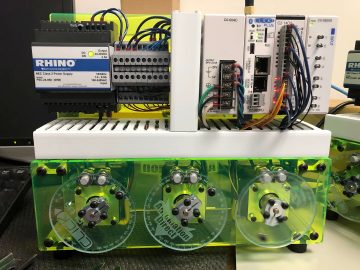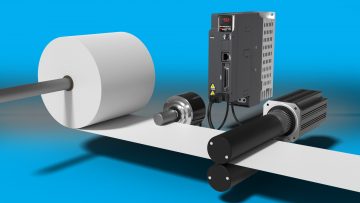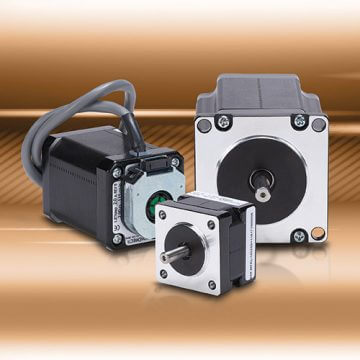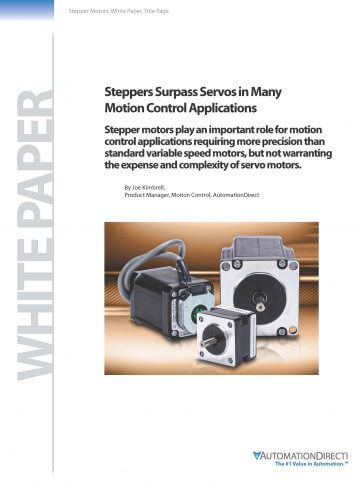Once only suitable for sheltered office installations, Ethernet media and protocols can now efficiently serve and future-proof a variety of industrial applications. Once upon a time (think 1980s), Ethernet was a relatively specialized computer connectivity technology, administrated by experienced gurus under highly-controlled office settings. Since then, technology and performance have advanced incredibly, and much of…
Modern multi-axis servo systems require a network for coordination of all the various movements. EtherCAT provides a high-speed cyclic mode that can update all the servo systems on the network within a few milliseconds. EtherCAT multi-axis servo systems can be created using the LS Electric XGB PLC in conjunction with LS Electric iX7 servo systems…
EtherCAT, which stands for Ethernet for Control Automation Technology, is a high-performance industrial network protocol based on standard Ethernet. It’s specifically designed for real-time communication and deterministic data exchange, making it ideal for motion control applications like robotics, assembly lines, and packaging machines. Key Features: Motion Control using EtherCAT: Benefits of using EtherCAT for Motion…
Linear actuators, driven with servo or stepper motors, are an effective way to implement accurate automated machine motion. Chip McDaniel at AutomationDirect wrote an article for the January 2023 issue of Design World’s Linear Motion Tips. Titled A Straight Line to Effective Linear Motion, this article explains linear actuator technologies, and it shows how they…
Designers working on smaller automation systems can now take advantage of advanced yet economical motion control by using micro-PLCs and stepper motors. Conor Perry, Technical Product Manager for the HMI and CLICK product groups at AutomationDirect, wrote an article for the October 2022 issue of Applied Automation. Titled Micro-PLC Motion Control Made Practical, the article…
Electrical actuators are an efficient and accurate way to automate linear motion on machinery and equipment. Automated machinery and equipment frequently require linear physical movement. Sometimes the mechanisms most move a product-holding tray into position, while other times the movement is for performing a manufacturing function, like drilling, inserting, gluing, or taping parts. The motion…
Servo systems are a leading way to implement high-performance motion control, and the latest servo drives offer functional, programming, and diagnostics capabilities to help users quickly create and commission solutions. Chip McDaniel, technical marketer at AutomationDirect, wrote an article posted July 2021 on Control Design titled Servo Systems Lead the Way to Implement High-Performance Motion…
Stepper motors use specialized control methods to achieve better precision than standard variable speed motors, while avoiding the expense and complexity of servo systems. For industrial automation, the term motion control usually means using an electric motor to positively drive the position, velocity, and acceleration of a physical system. Pneumatics are economical, and hydraulics can…
Stepper motors can be the best option, even for precision motion control applications, while avoiding the expense and complexity of servo motors. Standard AC induction and DC motors can only produce basic motion control, and servo motor solutions provide exceptional performance but drive up costs and complexity. For many motion control applications, stepper motor solutions…
Stepper motors play an important role for motion control applications requiring more precision than standard variable speed motors, but not warranting the expense and complexity of servo motors. For many applications, a stepper motor solution occupies the sweet spot of providing the required performance, but at a much lower cost than servo solutions. This white…


